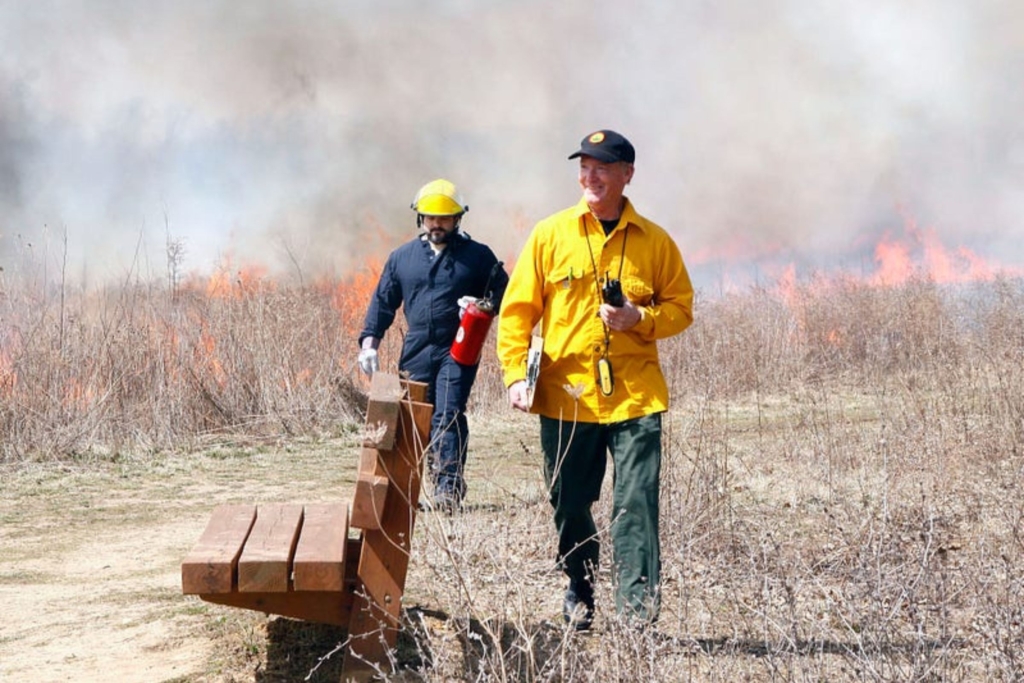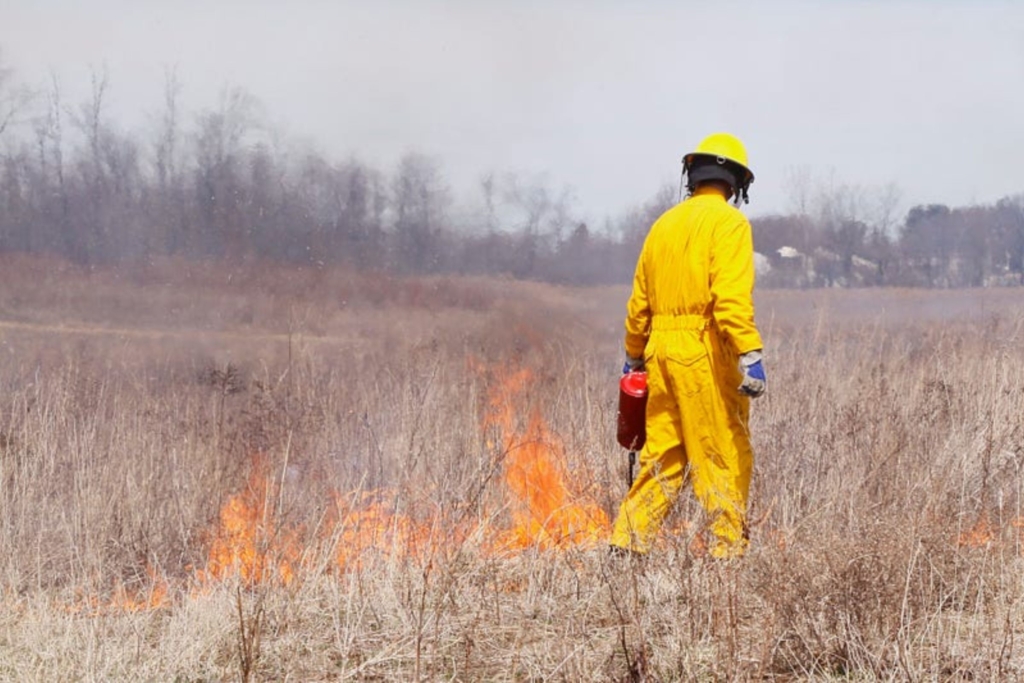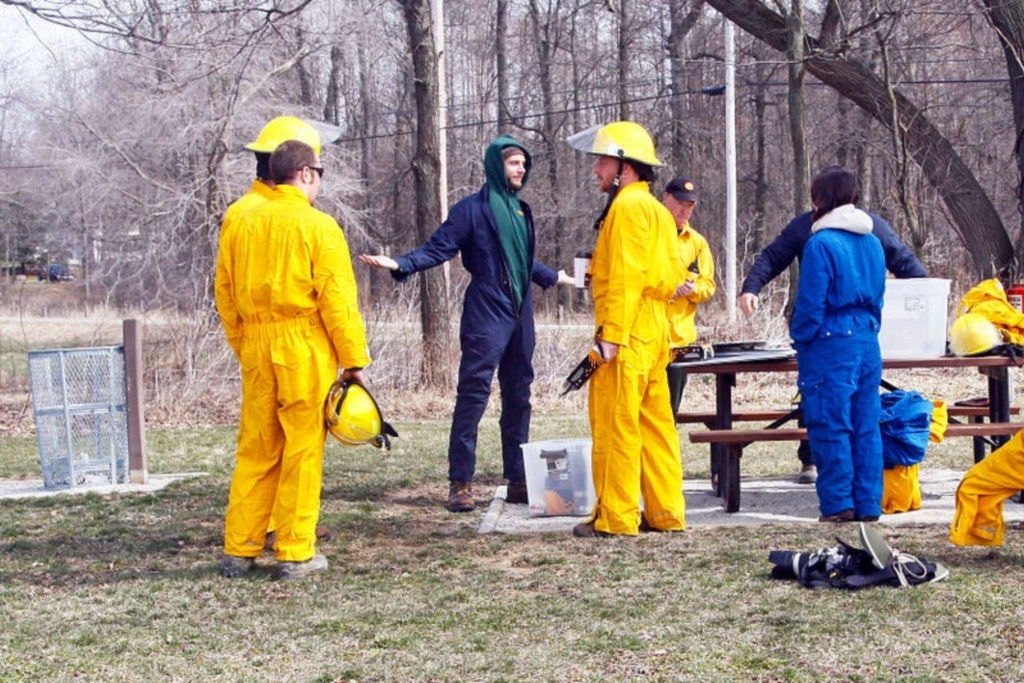
Why does Summit Metro Parks intentionally light its prairie habitats afire in the spring? The practice can seem alarming to some at first, but the resource management benefits are important to utilize.
Park visitors have been interested in learning more about these fires, so we spoke with Eric Fitch, natural resource project manager for Summit Metro Parks. A professional with 16 years of experience with the park district, we fondly refer to Fitch as the “Burn Boss.”

Q: The big question is, why do we burn prairies?
EF: Burning does a number of things for a prairie:
- It removes the dead material, which allows the spring sunlight to reach new plant growth.
- When the field is black after a burn, it causes the soil temperatures to warm up more quickly.
- When it rains after a burn, the ash acts like a fertilizer for the new plant growth.
- Burning the prairie kills the cambium layer of any woody plants (young trees) that may have seeded in the prairie.
- If we did not burn or brush-hog a prairie on a regular basis, it would eventually turn into forest.

Q: When are prairie burns typically performed?
EF: We typically burn during the month of April. The goal is to burn as soon as the weather permits, before plants establish much new growth and before any migrating birds return and start nesting. We only have a narrow time frame.
Q: How do you decide whether or not to burn?
EF: There are a number of factors involved in the decision. Some of those include the number of days since it last rained and the predicted wind direction and wind speed for the day. Relative humidity is also critical, and it needs to be less than 50 percent. The atmospheric mixing height is an important consideration for smoke dispersal. And of course, we have to have enough staff and equipment available to safely conduct the burn.

Q: Who performs the burns, and how many people are needed?
EF: Summit Metro Parks biologists and operations staff conduct the burns. Staff size depends on the size of the area we are burning. It can require as little as four or as many as 15 people. When it comes to preventing the fire from spreading, the more people we have, the better. This is one project where I don’t want to be an overachiever.
We also work with other agencies, not only in the permitting process, where Akron Regional Air Quality and the local fire departments are involved, but we’ve also had fire departments come out and use the burns as a training day for their staff.